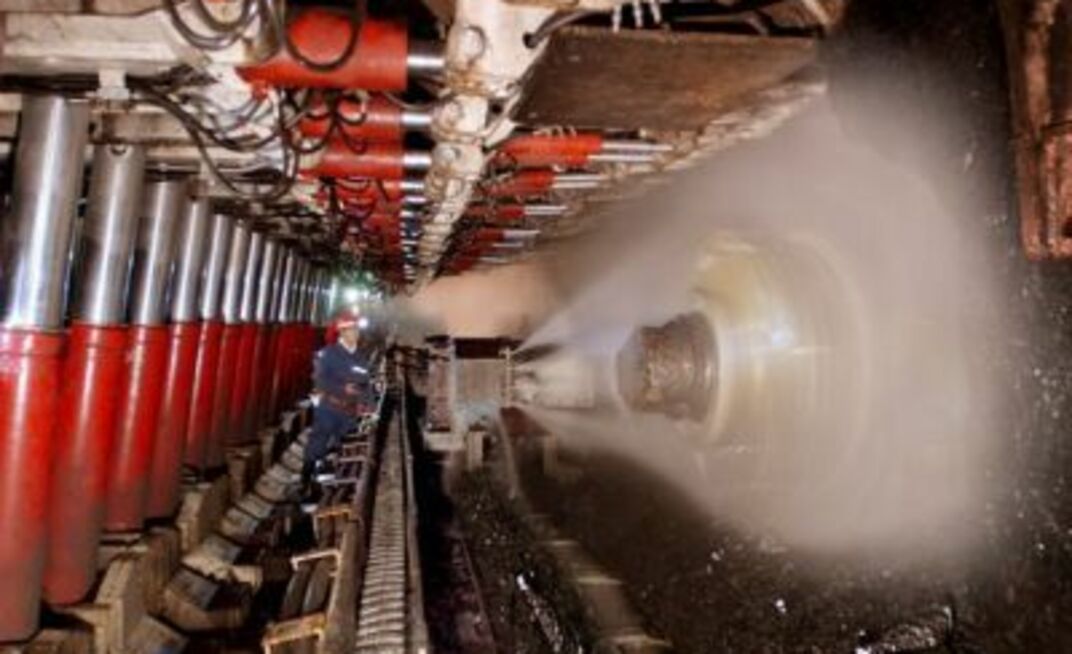During a recent visit to Parsons Chain China, CME also arranged a visit underground for Australians Mark Newton of Ellton Longwall and Mandalong longwall maintenance engineer Scott Ashbourne. Below, Newton recounts what he saw at the mine.
Ping Shuo Coal Mine
After a five-hour drive from Beijing on a highway that any Australian would be proud to own, we were greeted very warmly by coal mine officials upon arriving at the Ping Shuo Coal Mine. We got changed in a bathhouse which featured lounges and attendants - a far cry from what we are used to back home.
The rubber boots were not steel capped, which made me feel not as sure-footed as in Australia; however, the cap lamp was an LED polymer battery model, which gave excellent light in both narrow and broad beam. It only weighed 0.31kg (0.68 of a pound) with 20 hours battery life.
I was taken so much with it that they had the manufacturer send me a sample. Now, we are just trying to get Australian certification to make this lamp available in Australia and I will have a sample at AIMEX this year for anyone interested to see.
Our helmets had a transponder fixed inside, as did all their employees. One screen in the control room pinpointed all employees underground as red dots on a mine plan. A double click on a red dot gave more specific information about the employee. A great system, I think, that should be mandatory in underground mines in all parts of the world.
We went underground in a Mitsui D280 Diesel Dual Cab Man Carrier we believe to be modified in Australia with spark arresters and air start.
The decline and roadway to the working face was fully concreted and lit all the way to the face. Access was by the tailgate.
The longwall was a China National Coal Mining Equipment (CME) top caving face, 240m wide and with a 2km panel length.
The operation is a 365 days, 24/7 operation.
The face was running Parsons 42 x 146 compact chains at 3.2m per second. It was fitted with a two-speed, soft-start drive that was a very soft, soft start, as to invert knuckle ups. Chain tension was set by experience and eye to ensure the lowest tension without problems to extend chain life.
The mine, which features two top coal caving faces and which has been operating since January 2005, has planned utilisation to keep the output conveyor belt full. The output conveyor was the mine's bottleneck, capable of only 3000 tonnes per hour.
It averages 40,000t per day, with output of 14 million ROM tonnes per year.
Three to four hours per day is dedicated to maintenance, utilising the second longwall during maintenance to keep the output conveyor full.
The roof was held up with three bolts per metre with the addition of cable bolts at the intersections. The ribs used two bolts per metre and were fully meshed. No stone dust appeared to be used.
They had four development panels using small road headers.
In all, Ping Shuo Coal Mine was a very well organised, well equipped, safety conscious operation with all the same pressures and goals of an Australian pit. They were proud to show us their operation, which was not at all like the pictures our minds paint from the bad press some of the small, illegal mines have produced.
Thanks go to the management and staff of Ping Shuo Coal Mine for such an enlightening first visit underground of the Chinese longwall sector.
























